#they do forests really well! the coniferous biomes especially
Text

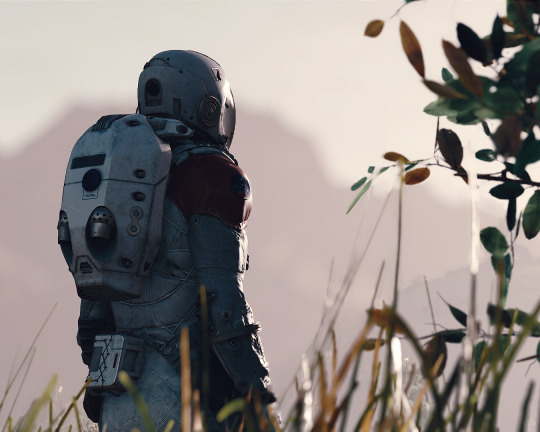

I like the green ones the most
10 notes
·
View notes
Text
Flora and Fauna of Hithlum, Dor-lómin, and Mithrim
I had flora of Dor-lómin posted separately but I thought it would be better to do a longer post!
Flora and fauna of Arda masterlist
Edit: I’m making separate posts for the different parts!
Disclaimer: I used both what we can extrapolate based on descriptions of the landscape and climate as well as my own headcanons and inspirations. I also use reference books about similar habitats and landscapes. There was somewhat less canon information to go by in this one but I hope this is ok!
I really love working on and researching these! and as always feel free to ask more, even if I’ve already done a place I’d always enjoy going into more detail of tacking a more specific kind of life there
Hithlum (Sindarin: Mist Shadow) is a land North of Beleriand. The Southern and Eastern borders were lined by the Ered Wethrin or Mountains of Shadow which were near impossible to cross and the Northwest border was lined by the Ered Lómin or Echoing Mountains. Though Hithlum was not on the ocean, sea mists from beyond Nevrast often reached its lands, hence the name. Hithlum held two important regions in the First Age, Mithrim where the hosts of Fingolfin lived for some time ruled and Dor-lómin, which Fingolfin gave to the House of Hador.
While we do not have extensive information on climate. What we do have, as well as information on the landscapes is helpful in determining both climate as well as flora and fauna.
We do know that the climate of Hithlum is relatively cool with high levels of humidity due to the mists and cold winters though the lands were suitable for farming.
Dor-lómin (Sindarin: land of echoes) is in Hithlum which is in Northern Beleriand. Dor-lómin is in the Southwest of Hithlum with the mountains of Mithrim bordering the East. It was the home of the House of Hador until the Nirnaeth when it fell under the rule of Morgoth’s human allies who he trapped in Hithlum.
Mithrim (Sindarin: gray-folk) was under the rule of Fingolfin for many years in the first age. It lay around the Lake Mithrim.
The House of Hador were horsemen and much of the lands were grassy though coniferous forests also occurred especially in and around the mountains. As Hithlum is not too far from the Helcaraxë, it’s very possible that parts of it are Taiga and temperate wetlands. Illustrations including those by Tolkien himself appear to resemble North American prairies (especially further Northern ones into Canada) as well as grasslands of Eastern Europe and areas of Northern China.
Possible grasses are apera (windgrass), prairie junegrass, wood small-reed, species of festuca, timothy grass, alpine meadow grass, tufted grass and more.
For the coniferous forests, many species of pine trees, spruces, and firs. I go into the biodiversity of coniferous forests in more detail on my post about Dorthonion.
Given the likely biomes, plants that thrive in wet, cold environments would be the most common. Ferns (moonwort, pillwort, golden scaled male fern, etc)as well as plants like cattails, bog rosemary, fireweed and ground pine. Wild strawberry and cloudberry might be found along the outskirts of the meadows.
Lalaith (of Dor-lómin’s) hair is likened to yellow lilies. If I had to make a guess as to the species, I would guess Lilium pyrenaicum which grows in regions with similar climate and biomes. These might have grown by the stream she was named for.
Other possible plants that grow on the banks of both the larger river and the Nen Lalaith are witch hazel, laurel, marsh marigold, wood betony, bladderwort and more.
Edible and otherwise gathered plants might include yarrow, fennel, dandelion, sweet willow, wild garlic, meadowsweet, wild spinach, dead nettle and wood sorrel. Perhaps certain orchard fruits though a lot of those that are most likely are not very edible like crab apples.
As for animals, I imagine most larger species, especially larger predators, are found in the mountains were brown bears are a possibility as are wolves, Eurasian lynxes, red foxes, wolverines, fishers, weasels, martins, elk, porcupines, and large river otters.
Smaller mammals include greater horseshoe bats, vesper bat, red squirrels, mountain hare, snow vole, marmot, and many species of field and wood mice.
Lake Mithrim likely has a diverse range of aquatic birds including grey herons, tufted duck, steller’s eider, goldeneye, bimaculate duck, garganey, snow crane
It would be difficult to even start with a list of possible fish for the lake though I can if there is interest! (I do like the idea of wildlife like in ancient and isolated lakes like I did for the Himring post).
For Nen Lalaith and other streams and smaller rivers, species of minnows, Oryzias, mosquito fish, brook trout, and shiner are possibilities.
Crested newts, fire salamanders in their aquatic stage, freshwater snails and other mollusks can also be found. Common tree frogs are likely one of the only other amphibians.
Other birds of the region may include the greater painted snipe, great bittern, white backed woodpecker, thrushes, marsh wren, and river warbler, snowy owls, and species of nightjar
Once again, this is just speculation drawn from a variety of places! I’ve tried to make this as ecologically realistic as I can. And this is only a small sample of species and genuses! As always feel free to ask more questions!
32 notes
·
View notes
Text
Stanford “Unable to Make a Proper Field Journal” Pines, PhD
*checks watch* Yep it’s about time for my regular “Ford does not know how to do field work” rant.
If you’re wondering “who are YOU to tell Stanford Filbrick Pines that he doesn’t know how to make a field journal”, well, don’t worry, I know what I’m talking about. I have a bachelor’s degree in biology (double emphasis in microbiology and environmental biology) and geology, both of which involved maintaining a field journal as part of the lab requirement. I’ve made far too many field journals. I know what a good one looks like. And yes, I have pictures of one of those field journals. (I apologize in advance; I misplaced my biology field journals, so all of my pictures are from one of my geology field journals.)
Here’s a taste:
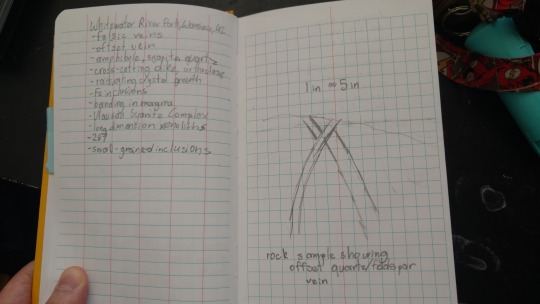
Look, Ford is great. I love the man. I relate to him to an almost unnerving degree, probably due to the fact that I myself am a scientist. But damn, I seriously question whether any of Ford’s ten PhD’s was in a field that involved field work. Because if I turned in a field journal that looked like any of Ford’s journals, my teachers would have given me a big, fat F. Why? A lot of reasons, but arguably the biggest one: complete lack of context.
Context is crucial in research. Not just even context like “this is why my research is relevant”, but context like “this is where I saw the thing, this is what the weather was like when I saw the thing, this is what was around me when I saw the thing”. I wasn’t able to locate my biology field journals, sadly, but I remember what was required on each entry. Some of the requirements:
Date
Arrival time
Departure time
Location (e.g. “Riparian zone to the south of 1st National Bank in Rockford”)
Slope (not just “there is a slope here”, literally measuring the angle and direction of slope)
Weather
Biome type (e.g. “conifer forest”, “grassland prairie”)
Dominant vegetation
And all of that’s before the actual notes on the location! Because they provide context. Date – time of year will influence vegetation and animals. Arrival and departure times – different species are active during different times of day. Location – some species might only live in one incredibly specific location. Slope – influences vegetation, temperature, and humidity. Weather – some species only come out during certain types of weather (think worms that come up when it rains). Biome type – self-explanatory. Dominant vegetation – influences animals, since some species only consume specific plants. These are all incredibly crucial things to note at a location that you are studying. You need the context of all those factors if you want to repeat your results.
And in science, the key is to have reproduceable results. If you have a species that is only present in a coniferous forest, you won’t be able to reproduce your results in a deciduous forest. But if you never wrote down that you saw that species in a coniferous forest, you might never find them again. And no, you won’t remember. Trust me. It’s a saying in scientific fields. “Write it down. You won’t remember.”
Now, Stanford Pines. He studies magical animals. All of the things I said apply to normal animals. Magical animals are gonna be 1000% more difficult! Ford needs to be writing down what phase the moon is in, what direction he’s facing, maybe even what he ate for breakfast. But he’s not writing down any of it! The scientific world is NEVER going to believe him unless they themselves can reproduce his results. And without the context his research so desperately needs, that’s never going to happen.
Oh, another aspect of context that he’s missing: none of his sketches have scale. If you draw something, you need scale. If you take a picture of something, you put something in that picture for scale. Otherwise, we don’t know how big something actually is. Another thing needed, if the drawing is of a sufficiently big object, say, the mysterious cliffs in Gravity Falls that are due to a UFO crash, you also need N/S, E/W. Drawing that cliff amounts to drawing a topographic profile. And you need context when drawing a topographic profile. Case in point:

Actually, while we’re talking about the cliffs: we need more information on those. Those are a geologic feature. If you’re going to describe a geologic feature, you need to include the pertinent geologic information. That means rock type, dominant minerals, strike and dip, and anything else a geologist might note.
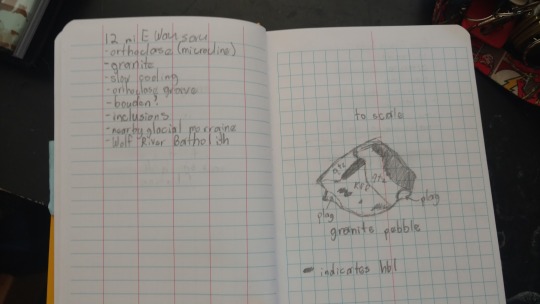
Also, before jumping to the conclusion of “these cliffs are CLEARLY due to a UFO crash”, maybe ask a geologist how you might get a cliff like that to form. Okay, yeah, in this case, the conclusion was right. But generally speaking in science, you only resort to “aliens did it” once you’ve exhausted every single option. Which we have no indication of Ford doing.
“But Ford isn’t a geologist, he wouldn’t know how to find those things.” Well, then he shouldn’t be describing a geologic feature. He should be taking a picture to send to a geologist, or better yet, bringing a geologist along. If you see something that you don’t know how to describe, in science you don’t just do your best. You find someone who does know.
So, now that I’ve mostly covered the context that Ford is missing, let’s talk organization and neatness. It’s not organized enough and it’s too neat. No, those aren’t contradictory.
By organization, I mean breaking up the journal into different sections based on date and trip. Making separate entries. See this note from one of my professors on my field journal:

It says “Include trip title at beginning of notes”. Ford doesn’t do that. Well, he does that sometimes. But he doesn’t do it consistently. And you need that. Especially if you have the context I talked about at the beginning. You need to separate which context goes with which entry. Because, and I’m gonna say it again, research needs context.
Most field journals and lab books also have numbered pages and a table of contents at the beginning, which you can fill out yourself. That’s optional, not required, but if you have a lot of research and you want to find something quickly, it’s very useful.
Now the handwriting. It’s too neat. Too nice. No, this is a thing. It really is. I’ve gotten docked points for my handwriting being too neat and organized in my field journal before. Not because they were upset they could read my handwriting, but because the neatness was evidence that I erased my original notes. Which you should not do. I took pictures of my notes so that I could copy them down word for word, just more neatly, but that doesn’t matter. Because my teachers didn’t have proof that they were my original notes. And if they weren’t my original notes, then they are probably inaccurate. Remember: “Write it down. You won’t remember.” And as proof that there’s no way Ford was actually writing all this out in the field, here’s a sample of my handwriting:
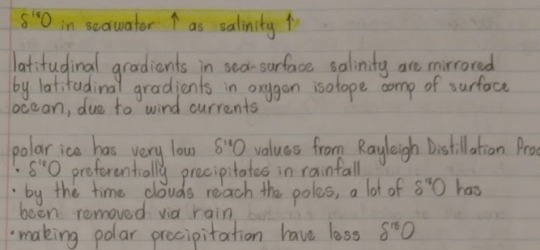
It’s very neat and nice, isn’t it? This is how I write when I’m careful and take my time. Versus this:

This is how I write when I’m out in the field. Because you aren’t sitting nice in the field. You’re standing awkwardly or squatting awkwardly or leaning against something or using non-flat surfaces as writing surfaces. Google pictures of field research and you’ll see what I mean. You cannot write nice out in the field. It’s impossible. I feel confident in saying that, not only because I’ve written while out in the field, but also because every single professor I’ve ever had could tell what in my field journal was originally written in the field and what wasn’t.
Stanford Pines’ notes weren’t written out in the field. They were written from the comfort of a writing desk. So they aren’t trustworthy.
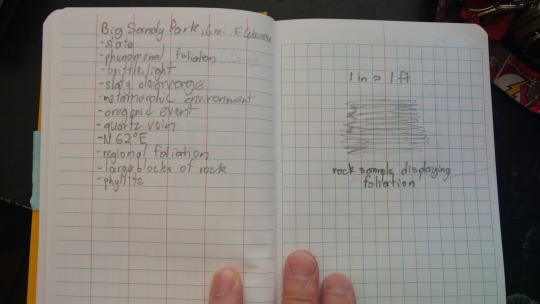
And my last point about why Ford clearly does not know how to make a field journal: he has zero consistency as to what he puts in it.
It’s got plenty of field stuff in it. Plenty of information on the various weird shit in Gravity Falls. Well, not plenty. Some of his entries could use more information on the critters. Some of them could use a lot more information on the critters. And other entries…honestly, why the hell are they even in there? Did Ford really need to include an entire entry on himself? On the history of Gravity Falls? On his own (reasonable) paranoia after finding out Bill’s true intentions? Uh, no. In these areas, it very clearly ceases to be a field journal, and serves as Ford’s personal journal. There’s nothing wrong with having a personal journal, naturally. The problem is when it is masqueraded as scientific research.
…And that’s all I’ve got. At least, right now. I very well might think of other things that prove Ford doesn’t know how to make a field journal.
I sincerely hope that Ford eventually takes at least one (1) class in which he learns how field journals actually work.

#gravity falls#stanford pines#sorry that the pictures aren't more interesting#field journals aren't meant to be fancy and cool looking#they're just meant to have research and data in them#look. they will get mud and all sorts of other stains.#you don't wanna sink a bunch of effort into making something look all nice#only to drop it in a puddle the next day#speecher sciences#rant#speecher speaks#my stuff
276 notes
·
View notes
Link
The following blog post, unless otherwise noted, was written by a member of Gamasutra’s community.
The thoughts and opinions expressed are those of the writer and not Gamasutra or its parent company.
As an environment artist in the games industry, I’ve made quite a few forests over the years. At Eastshade Studios, both our recently released title Leaving Lyndow, and our upcoming title Eastshade feature plenty of forests. There’s something very powerful about walking through a shroud of trees, and attempting to recreate that feeling in a game world is one of my favorite things to do. In my unending quest for pretty forests, I’ve learned a few things that I believe are important to eliciting that growthy feel. Some may seem simple, but I’m always surprised by how many game forests overlook some of these. A disclaimer: This article is not about how to create great foliage assets. There are quite a lot of good resources on that topic. This is also not a technical tutorial on how to author a forest in terms of shaders, lods, or optimizations. I actually have a lot to say on that topic and would like to write another article at some point on that specifically. This article focuses on the larger picture such as deciding what assets you need to make, how best to use them, things to think about, and ideas for more believable and less monotonous forests.
Reference
I’ve heard this a thousand times, maybe you’ve heard it a thousand times, I’ve said it a thousand times, and nonetheless, I will say it again: Reference is paramount. Virtually all the things mentioned here I learned as a result of looking closely at reality, and making decisions about what is important to the big read. Walk in forests, pay attention, look at what’s there. Rely on what you objectively see, not your own ideas of what a forest has. Whenever you are trying to capture the magic of reality, you need to be informed by what you actually see, not what you think you see. This is true even if your forest is a stylized fantasy forest with orange waterfalls and blue bushes. With that being said, let me pass on some things I’ve found to be important.
Clustering
Resist the urge to scatter foliage and trees evenly over a space. Organic randomness is a funny thing, so don’t be afraid to boldly cluster a lot of things together while leaving other parts practically barren. On top of this, a lot of small shrubs and sapling tend to grow symbiotically at the base of other plants. In addition to looking natural, it can also cover ugly intersections between your trunks and the ground. Sometimes there is a tightly packed cluster of thin trunks that almost seem to grow out of each other. Don’t miss things like this! Sometimes I see people spending hours toiling away at leaf normal maps while overlooking more noticeable things like tree placement.
Trunk Density
This may be the most important tip in this write-up. Walk in a forest, and you will notice there are a LOT of trees. Hundreds of trees are in view at any given moment. While mastering this level of density may seem like more of a task in optimization than a task in art, there is actually one crucial art trick that helps performance as much as any draw call batching, shader optimization, or GPU instancing, and here it is: Not all of your trees need canopies. Getting a tree to look right standing by its lonesome requires a lot of triangles in the canopy, and this is the way we author most trees. But when many trees are clustered together, the canopy reaches maximum fullness rather quickly, and any additional trees are adding thousands of triangles, but not helping fill the canopy. Put another way, we tend to reach our desired canopy density long before we reach our desired trunk density. So what can you do? Add trunks without canopies. In my case, I just use my dead tree models, which are much lower poly since they have no leaves.
Dead Things
Something I see commonly neglected in game forests are dead things of all kinds. A large percentage of the trees in a forest are dead with no leaves. This is true for both deciduous and coniferous forests. On top of adding believability, they also have the added benefit of being lower poly since they don’t have canopies (see the section on trunk density). When trees die, sometimes they fall. You can make an old overgrown log, or simply turn a tree sideways branches and all. Then there are stumps. Typically when one pictures a stump it’s the man-made stump, but there is also the broken off tree, or rotted out variety of stumps, which are natural and numerous in all forests. Don’t forget unlikely notable sights, like a fallen tree leaning against another, a log dangling off a boulder, or a tree that has fallen into a river. Sometimes we neglect these things because we’re too focused on the more common sights, but these sights are often the most interesting in a real forest, why omit them from our fake forests? They are critical for breaking up the monotony of the environment.
Trunk Bases
Humans tend to look where we step, so players will spend most of their screen time with their camera pointed eye level or even cast downward a little. This holds true in both first and third person. When we author a tree, we often focus on its canopy, likely because it’s the largest portion of the tree in terms of sheer size. While the canopy is important, especially the silhouette as its cast against sky, in denser forests the canopy tends to get swallowed up by other canopies, and the trunks at the eye level become even more important. Photogrammetry (or photo scanning) can help a ton with this, especially since the texture of a tree trunk and its organic shape make for perfect photogrammetry candidates. You may have to use a separate 1:1 texture for the lower part of the trunk, and find a way to switch to tiling texture as you move up the trunk. This can be handled with a blend shader, or with multiple meshes if you can find an undistracting place to put the seam. Another option is to devote more texel density to lower parts of the trunk in the UVs. I must admit I haven’t put enough love into some of my own tree trunks where they meet the ground, but it’s something I will definitely pay more attention to for my tree assets in the future.
Undergrowth
Generally every available space on a forest floor is covered with some kind of foliage. One’s immediate intuition might be to use grass, but tall green grass is not terribly common for a natural forest floor. It can definitely create a cool surreal look to use a sea of grass under tall trees, but just know that shrubs, ferns, and low lying leafy stuff is much more common.
Rocks
Rocks of all sizes are important. Pebbles in spots without plants can add a lot more believability to the barren ground. More and more people are using dynamic tesselation and building the smaller rocks directly into the texture. This is a great option if you have the shaders to support this. Otherwise placing the pebbles as meshes works as well. I prefer to model my mid-size rocks in clusters. This makes it possible to spend time assembling a really nice looking formation which you can propagate quickly. Rocks are probably one of the best use cases for photogrammetry I can think of. If you have means to do this, I’d recommend doing so. Contrary to what some may think, it won’t save you time. It will very likely be more difficult and take longer than modelling them yourself, but the results are worth it.
Rivers, Streams, Lakes, and Ponds
In real life, if you get to the end of a forest hike without seeing any water, it was probably a boring hike. Hiking trails are often carved because of water. Water is probably one of the first things you should be laying down while deciding on the layout of your forest. I tend to decide on lakes and rivers right at the start, and build my forests around them. There’s no two ways about it. Rivers are hard. If you’re new to game art, you may assume there’s an industry standard way of making rivers that you’re not being let in on. There’s not. If you know the perfect way to do them please let me know. I’m just here to tell you that you’ve got to have them, else you are committing to a forest no one would want to hike in. When I’m first starting my forest layout, I often lay in the bodies of water first, and structure the entire biome around them. Something that helped the look of my rivers was to dress the edges of my rivers in lots of rocks.
Particles
Forests tend to be very visually busy environments. This onslaught of noise can often make for an image without easily perceivable depth. This is true for forest photography as well. Something that can help with this is particles, weather it be butterflies fluttering about, leaves falling, white fluff drifting in the air, or dusty specs. The parallax and movement helps with perceived depth.
Time Wasting
There are a couple of rabbit holes in forest making that I feel can waste a lot of time for little benefit. Approach these tasks with caution so you don’t fall in.
Variants - When creating a new type of foliage, start with one variant. I’m serious. Don’t start plugging away at a second or third variant before you even test your plant in an actual forest. For one, you don’t even know if this new foliage will work, or what will make it look good. So don’t waste time making five variants from the get go, only to discover you’ve crafted them in a way that looks awful in the context of a forest. What’s even more important: See how few you can get away with first. Will anyone even notice all the extra variation? Is there something more important you should be spending time on that will offer variety in a more impactful way? I got really far with only four broadleaf variants (eight including dead versions). Modelling For Texture Bakes - This is quickly becoming the de facto way to create foliage textures, and I do it too, but you have to be smart about it. Don’t waste time modelling the perfect leaf and making variants of it. I don’t think it’s an exaggeration to say foliage textures are 90% silhouette. Spend all your texture creation time iterating on the silhouette, not the normal maps, or making sure every twig lines up with every group of leaves. Step back. Look at the big read. To illustrate my point, take a look at the comparison image below. On the left are some trees with a beautiful diffuse and lovingly baked normals. On the right are the same trees with a pure green diffuse map and no normal map at all. All it has texture-wise is an alpha mask. As you can see, it’s not a huge difference. Squint your eyes and you probably can’t even tell. The left does look a little better, but ultimately the silhouette carries the weight, and both renderings read similarly as a tree. General leaf size, branch structure, coverage, and scraggly twigs should be where you focus your efforts.
Be Bold with Experimentation
I think it’s important to be creative with your assets. Sometimes you can stumble on something interesting, even if it’s not what you intended. For example, I onced jammed the second LOD model of an oak tree into the ground and found its canopy made excellent bushes. It was already low poly since it was meant to be LOD1. I did some quick work making them into proper bushes, and now I use them even more than my original bushes, and it offers great variety to the mid-level shrubbery.
Conclusion
The TLDR is:
Use reference. Do research on real forests.
Don’t distribute plants and trees evenly. Make some clusters of tightly packed vegetation.
In dense forests, not all the trunks need canopies. This maintains density while saving polygons.
Don’t forget about dead trees, fallen logs, decaying stumps, and anomalies like a dead trees leaning against other trees.
Put extra love near the base of the trunk, where players eyes will fall.
Cover the ground with foliage. Ferns and shrubs are more common than grass.
Use rocks of all sizes to break up the endless foliage.
Water is usually the most interesting thing in a forest. The more lakes, ponds, and rivers the better.
Particles like bugs, leaves, fluff, or dust can add depth.
Don’t waste time on leaf noodling or excessive variants.
Don’t be afraid to try using your assets in unexpected ways.
This article is purely art tips, but I'd like to create a sort of second part to this article, titled "Tech Tips For Building Forests" which is purely the technical side. Please don't hesitate to reach out or follow me on twitter @eastshade.
0 notes